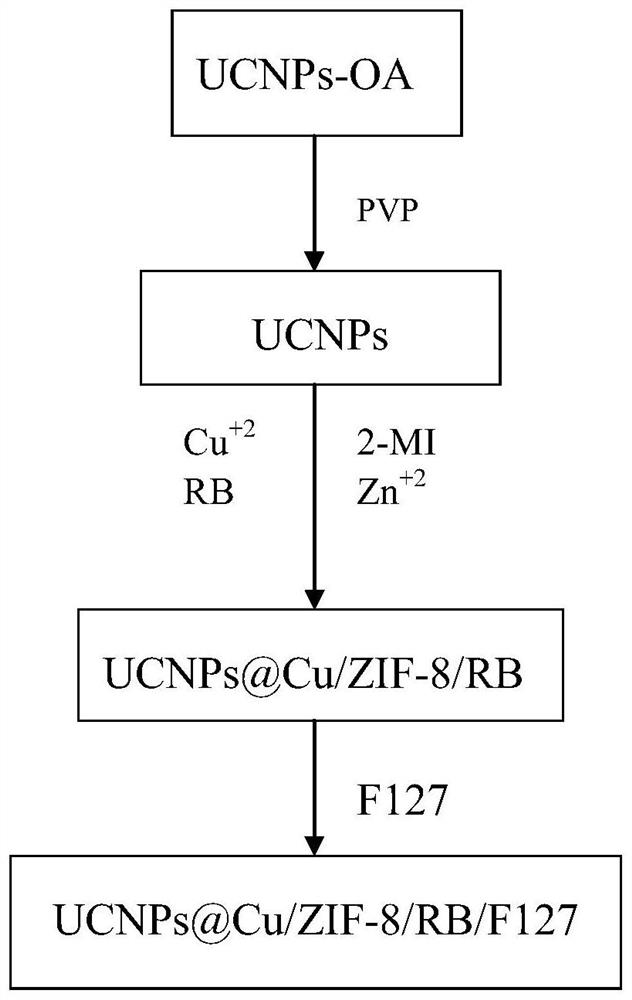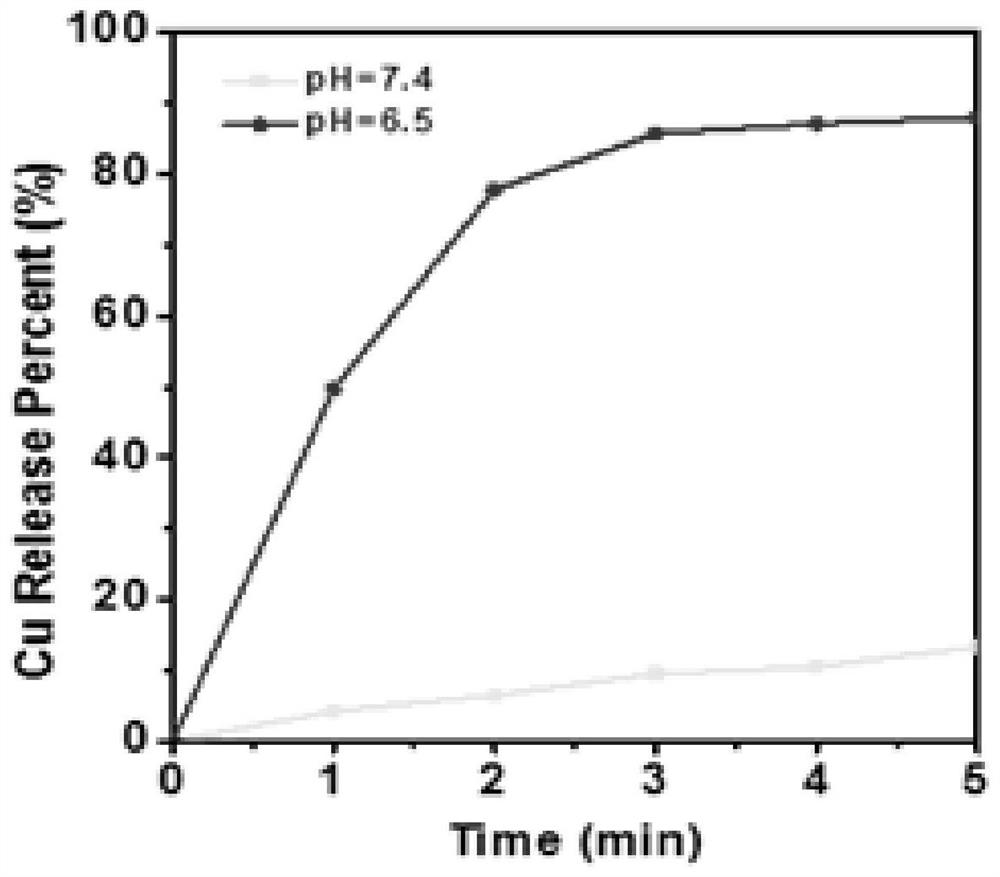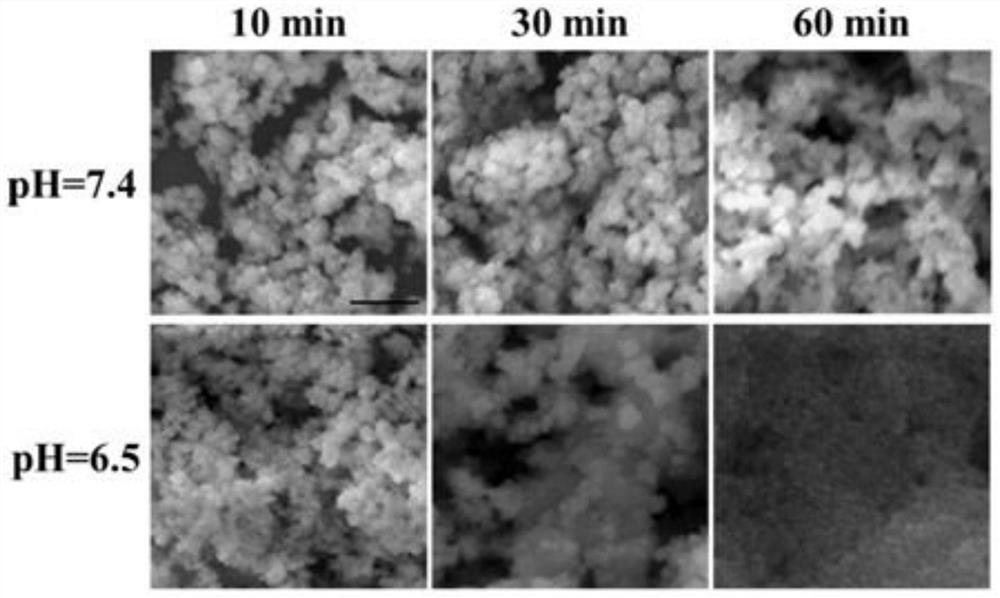Preparation method of composite nanoparticles for increasing active oxygen content in tumor cells
A technology of composite nanoparticles and active oxygen content, which is applied in the field of tumor cells, can solve the problems of unsatisfactory treatment effect and weakened treatment effect, and achieve the effect of increasing active oxygen content, enhancing synergistic treatment, and increasing active oxygen content
- Summary
- Abstract
- Description
- Claims
- Application Information
AI Technical Summary
Problems solved by technology
Method used
Image
Examples
Embodiment 1
[0041] Such as figure 1 As shown, this embodiment provides a method for preparing composite nanoparticles that increase the content of active oxygen in tumor cells, and the method includes the following steps:
[0042] S1), synthesis of UCNPs:
[0043] S101), adding 1 mmol of the aqueous solution of rare earth chloride into the reaction flask, and heating to 80° C. with magnetic stirring, until a white solid is precipitated;
[0044] S102), then add 15 mL of octadecene and 6 mL of oleic acid, heat to 130° C. to form a yellow homogeneous solution, and cool to room temperature;
[0045] S103), dropwise add 10mL methanol solution containing 4.0mmol ammonium fluoride and 2.5mmol sodium hydroxide to step S102) to form a yellow turbid solution;
[0046] S104), then heating the solution to 100° C., degassing for 15 minutes to remove methanol, water and oxygen, and then heating the solution to 300° C. under the protection of nitrogen, and keeping it for 1.5 h;
[0047] S105), after t...
Embodiment 2
[0057] In this example, in order to verify that UCNPs@Cu / ZIF-8 / RB / F127 can be degraded and released specifically by acid treatment, this example provides scans at different time points at different pHs, from figure 2 and image 3 It can be seen that the morphology of the crystals hardly changed under neutral environment (pH=7.4). However, when treated with an acidic solution, the crystal structure decomposed over time and degraded after 10 min of stirring, confirming the pH sensitivity of UCZRF.
[0058] Furthermore, the released Cu was detected by ICP 2+ As shown, when the pH value decreased to 6.5, more than 80% of Cu was released due to the decomposition of UCZRF 2+ . The above results indicated that UCNPs@Cu / ZIF-8 / RB / F127 has great potential as a drug for specific delivery.
[0059] The present invention uses diphenylisobenzofuran (DPBF) as a probe molecule to detect the extracellular singlet oxygen ( 1 o 2 )Such as Figure 4 (a) shown. 1 o 2 It can react with DP...
PUM
 Login to View More
Login to View More Abstract
Description
Claims
Application Information
 Login to View More
Login to View More - R&D
- Intellectual Property
- Life Sciences
- Materials
- Tech Scout
- Unparalleled Data Quality
- Higher Quality Content
- 60% Fewer Hallucinations
Browse by: Latest US Patents, China's latest patents, Technical Efficacy Thesaurus, Application Domain, Technology Topic, Popular Technical Reports.
© 2025 PatSnap. All rights reserved.Legal|Privacy policy|Modern Slavery Act Transparency Statement|Sitemap|About US| Contact US: help@patsnap.com



